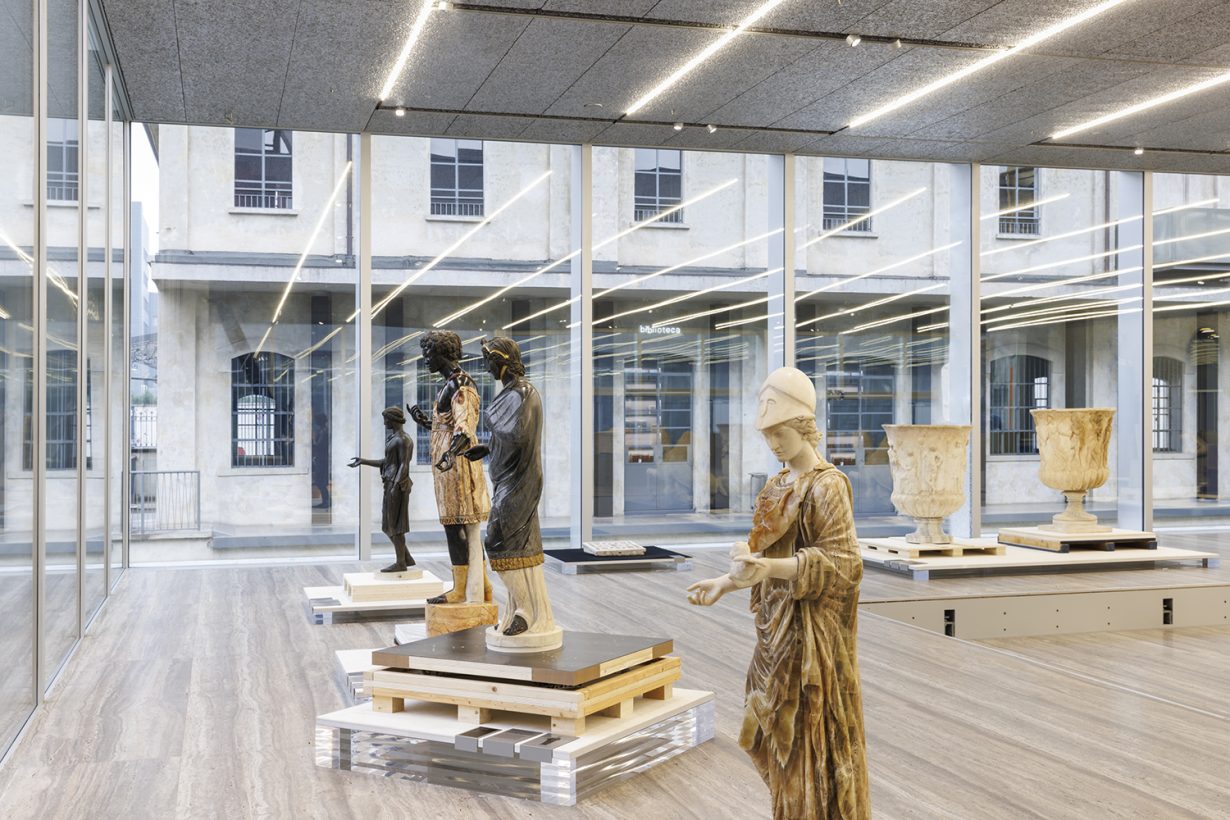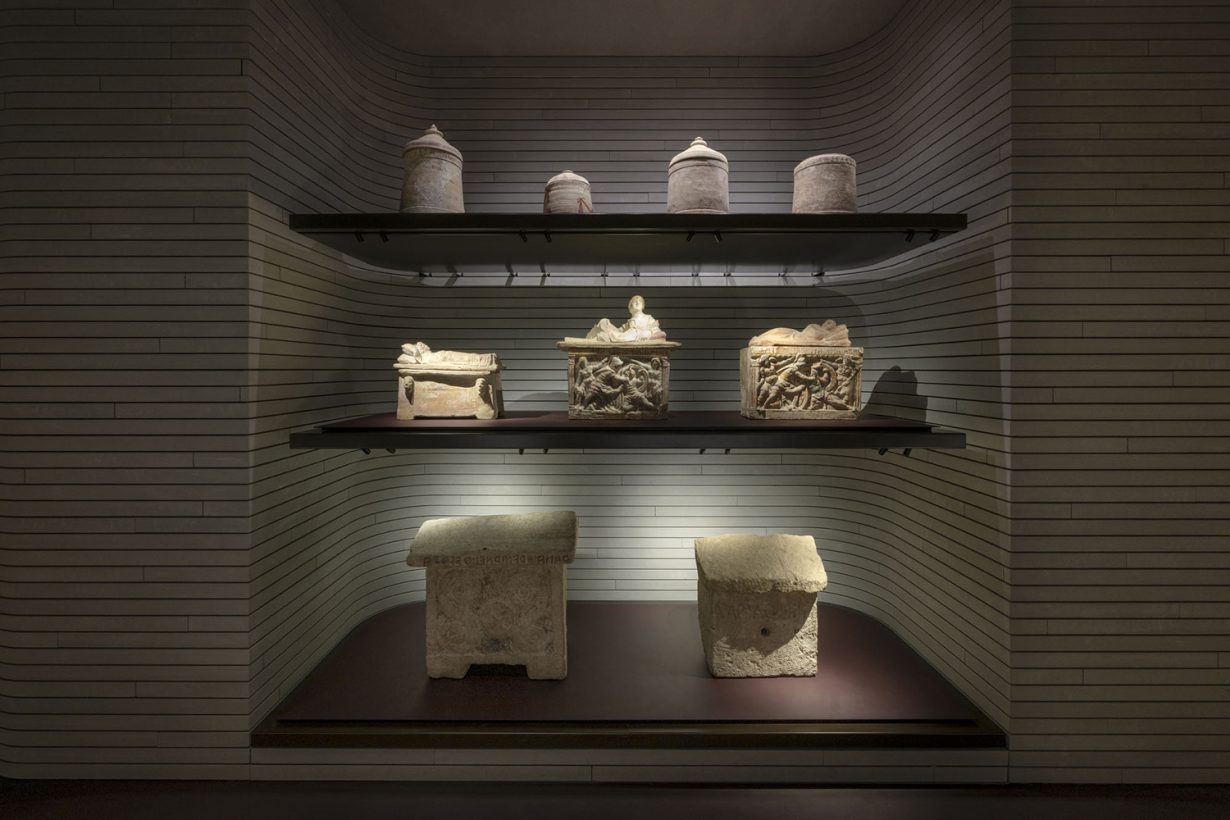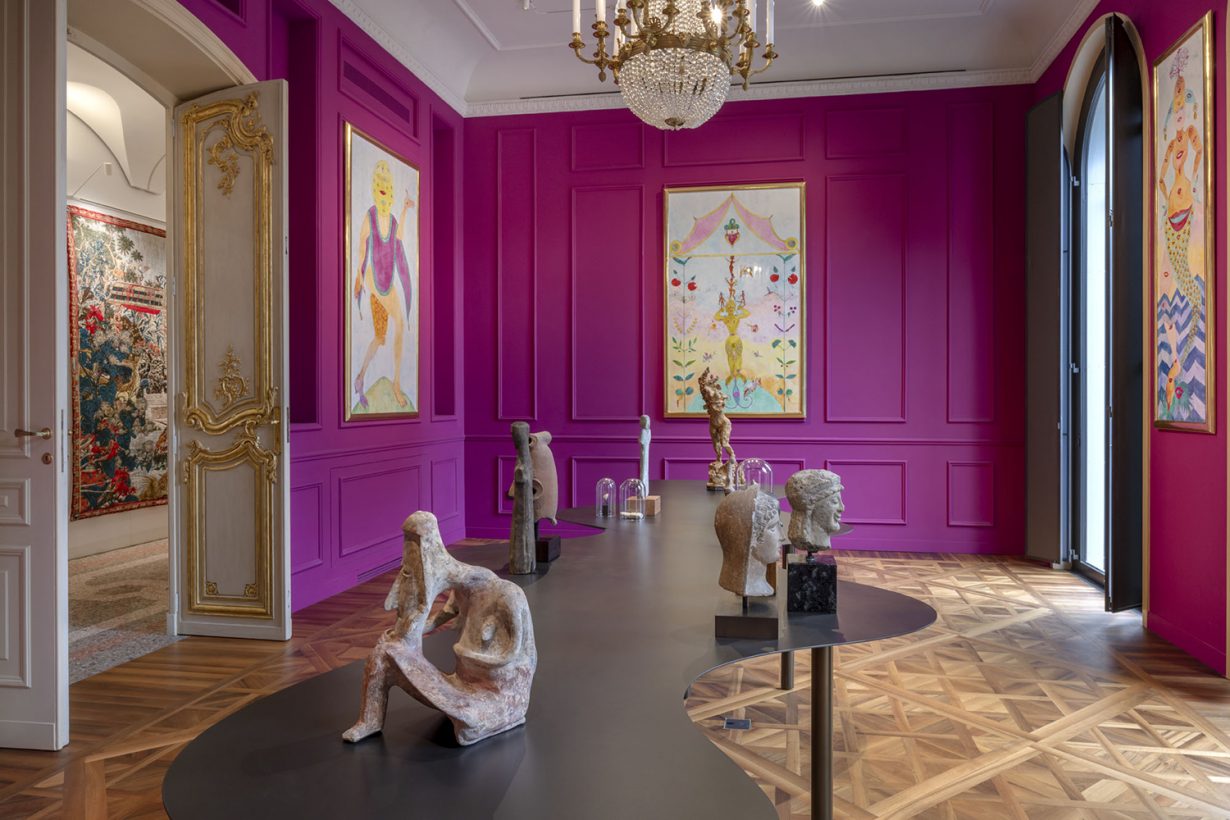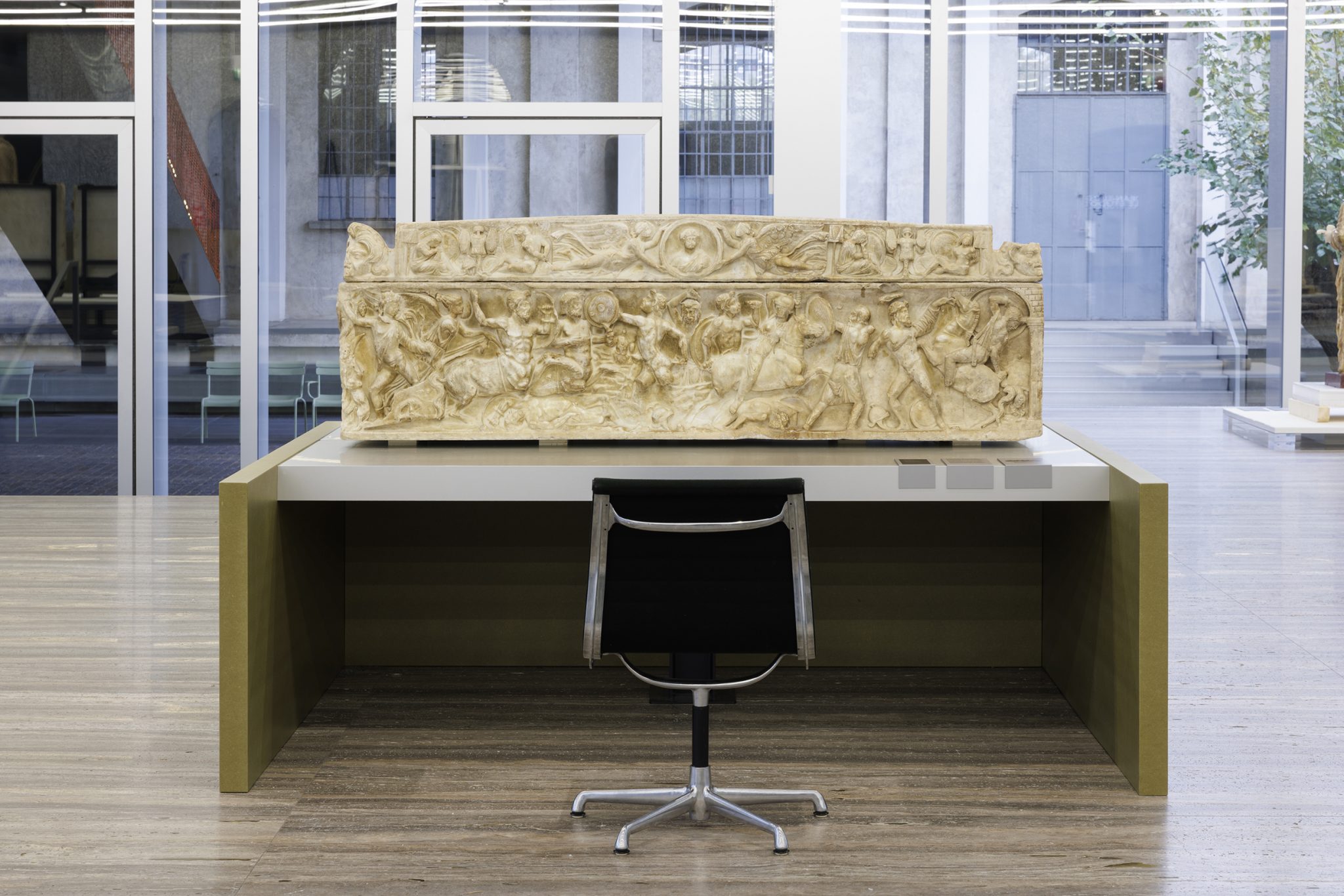Why our desire for teacherly curation risks becoming an aesthetic fetish
The exhibition guide handed out at the entrance to Recycling Beauty at the Fondazione Prada in Milan tells us that the show is presented in a ‘didactic landscape’. Showing is no longer telling; information panels attached to plinths do the heavy lifting. Classical artefacts – mainly marbles, and some mosaics – are displayed on office desks, with swivel chairs inviting visitors to sit and study the objects. Rem Koolhaas/OMA’s overtly pedagogical exhibition design stages a ‘thesis’ emerging from pieces curated by, among others, the illustrious Italian art historian Salvatore Settis. But the self-consciously studious setting also speaks to a contemporary cultural climate in which didactic exhibitions are in demand. These days, even those who argue against restitution of, say, the Parthenon marbles or Benin Bronzes – which were both in the news again this winter – cling to a ‘retain and explain’ approach (often with the help of dense wall labels). In the case of Recycling Beauty, such context itself becomes the main thesis – here focusing on the reuse, misinterpretation and adaptation of Greek and Roman sculptures in the Middle Ages through to the Baroque.

The exhibition makes good use of the plinths. A sculpture of Minerva, loaned from the Louvre, is put on a pedestal made of five separate materials, layered like geological strata. It speaks to how the figure itself was originally made entirely from onyx in the Hadrianic period; the surviving torso was then given a bronze head, hands, and feet in the 1630s – before these were replaced with marble in 1766. Meanwhile, the fourth-century BCE Lion Attacking a Horse – borrowed from Rome’s Musei Capitolini and placed on high during medieval times in the spot where the city’s death sentences were carried out – is sunk into the floor, where it rests on a block. That changed perspective, lowered then raised, now inverts the statue’s once political installation when it symbolised the power of justice. I think so, anyway – in the contextual panel, details are glossed rather than properly explained. (More information is given in the pricey catalogue.)
Labels and notes are crucial to understanding these exhibits, yet also spell out the exhibition’s limitations. What of the desks and chairs? You can take a seat and reflect on antiquity, repurposed, though there are no informative papers scattered about, nor drawers of discovery to delve into – ways and means that might have encouraged us to try out the role of scholar rather than spectator. Instead, it is the performance of studying that is fetishised. The exhibition’s second half moves into a renovated cistern, and onto three detailed case studies that include a reconstruction (and part replica) of the fourth-century Colossus of Constantine, towering at 11 metres – complete with a ‘making of’ video. A standard retort to Walter Benjamin’s lament about technology’s capacity to destroy art’s aura through reproductions argues the reverse: that replicas, in fact, build up the allure of an original all the more. But in Recycling Beauty’s voyeuristic form of didacticism, it is the idealised image of the antiquarian and researcher that radiates an aura.

Across town, Milan’s newest art museum, Fondazione Luigi Rovati, is an even more sensual delight that similarly cuts through linear history and makes reinterpretation its guiding theme. But it forgoes the footnotes and explanations that define Recycling Beauty. The Luigi Rovati opened its doors to a permanent collection last summer, having acquired a late nineteenth-century palazzo near Porta Venezia in 2016 that has been redesigned with verve and flourish by Mario Cucinella. Ancient objects, most notably Etruscan pots and figurines, are placed alongside works made as recently as 2022. The exhibition space below ground is sombre, taking its cue in layout and materials from Etruscan tombs. Upstairs, the piano nobile – the rooms in which guests would originally have been entertained – takes a design-conscious, pick-and-mix approach to history and culture. It’s camp, fun, if at times garish. In a striking room painted azure (the original colour of what was once the sitting room and library), Andy Warhol’s The Etruscan Scene: Female Ritual Dance (1985) gestures to the neighbouring antique bucchero vases on show in ornate, eighteenth-century cabinets. These display cases are recycled originals, added in the 1960s to the building that dates from 1871. In this standing exhibition, times clash without much context – though colours complement each other throughout.

It would be easy to criticise the Fondazione Luigi Rovati for privileging aesthetics above the didactic purpose of an exhibition. Historical reappropriation and creative playfulness with the past, in which the really meaningful context is the ‘now’, is seen as less spectacular and more insensitive nowadays. The exhibition reminded me of Gucci’s jewellery collection, Hortus Deliciarum – the third series of which was revealed in the summer. The fashion powerhouse’s artistic director Alessandro Michele incorporated historical pieces – such as micro-mosaics of the Colosseum and the Pantheon made for eighteenth- and nineteenth-century aristocrats on their travels – into his creations and took inspiration from the grand tours of old. As he told Vogue, ‘I like history because it’s like a vault. You can pick up things and put them in the present.’ Upcycling the past for aesthetic ‘aura’ is not unusual for luxury brands, yet feels as anachronistic as grand tours or their latter-day versions: do-gooding gap years in which young people find themselves abroad.
Gucci’s big reveal was set in the neoclassical Roman Villa Albani-Torlonia, which was a well-suited location: there, ancient friezes and sculptures sit alongside eighteenth-century frescos and – let’s say idiosyncratic – interior design (a classical bas-relief of Antinous is set into a modern, marble cenotaph, while kitschy candles stand watch). The Albani villa is testament to the fact that neoclassicism was founded on eclectic aestheticism. And yet, it also housed the German eighteenth-century art historian Johann Winckelmann, who wrote the ground-breaking History of Ancient Art in 1764: a book he called a ‘Lehrgebäude’ (a ‘didactic building’). In fact, the catalogue to Recycling Beauty claims Winckelmann mentioned its statue of Minerva in an early draft of that book. Winckelmann argued that history should be divided into discrete periods, and its art contextualised historically; he initiated the didactic, historical approach to understanding art. At the same time, Winckelmann’s ideas were shaped by overtly aesthetic premises derived from the houses where he looked at antiquities. The tension between an aesthetic gaze and didactic presentation has remained in place ever since – still found in Rome, Milan, and beyond.

Exhibitions, whether Recycling Beauty or the Fondazione Luigi Rovati’s collection, are inherently decontextualising: they display fragments of history wrenched from their original epochs and often also their places of origin. The Luigi Rovati arranges its objects according to an aesthetic grand design. When the predominant trend is didacticism, though, an aesthetic approach may risk appearing ostentatious and empty – or, more positively, it might be received as welcome light relief. But we would do well to acknowledge that the didactic alternative, such as at the Fondazione Prada, can turn out to be primarily aesthetic in its effect, too. The desire to be didactic can bring such a colossal weight to bear on an exhibition that didacticism actually becomes an aesthetic conceit: a fetish.
